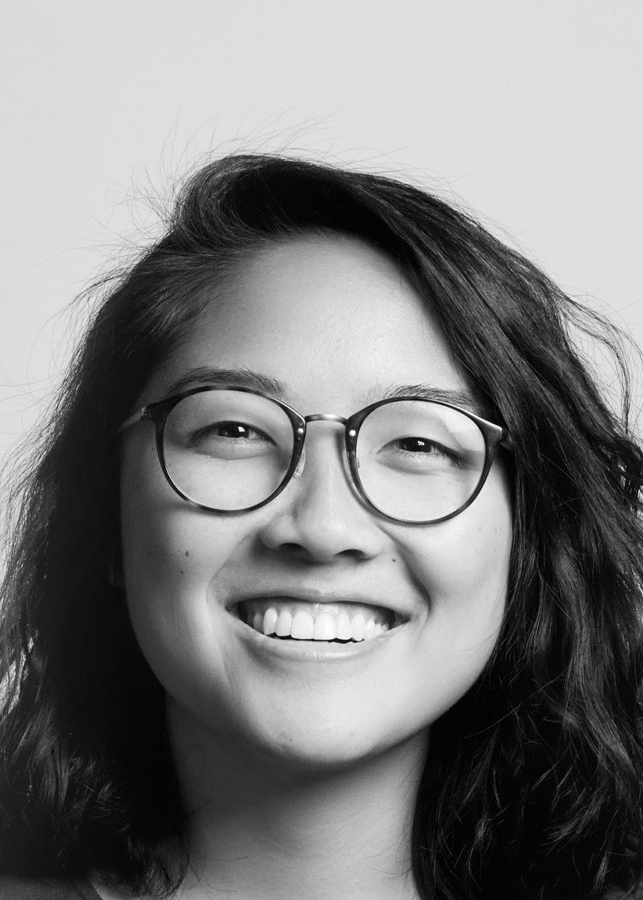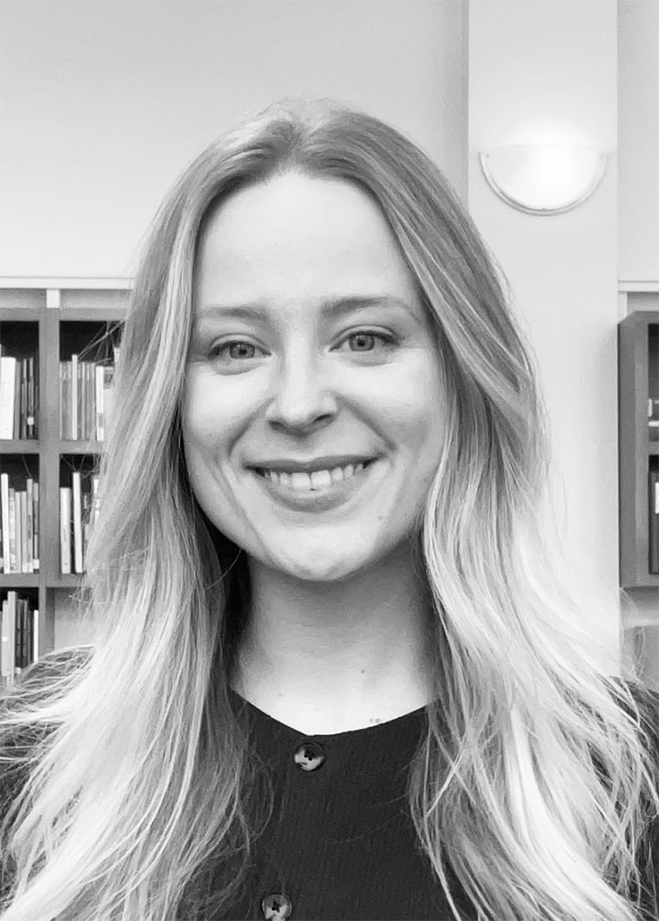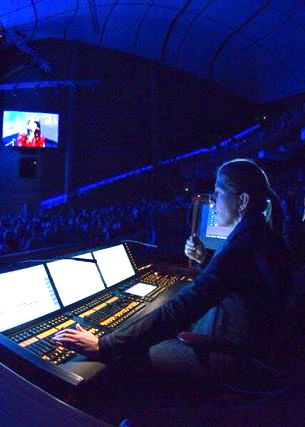Meg O’Hara
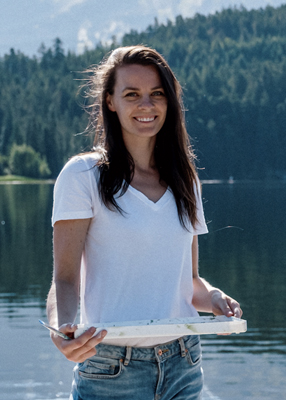
Meg O’Hara is the founder and CEO of Meg O’Hara Creative and was recently named to the BC Business 30 Under 30 list. She works as a landscape painter in Whistler, BC and has been commissioned to produce paintings for ski resorts, heli-ski lodges and private collections throughout North America. In this interview, she talks about balancing work and play, the inspiration behind her work, and why artists need business skills.
Why did you choose Art History and what did you enjoy most about it?
I come from a big art family—not necessarily artists, but champions for the arts. One of my great uncles is an art collector, and on my visits, he would teach me about the pieces and their respective meaning and history, which sparked a keen interest to unveil the deep-rooted history behind my favourite works of art.
My passion for art led me to take an art history class in my first year, covering the 16th century to the present. It was my favourite class, by far, and my best grade—a natural fit. This led me on my journey through Art History, which I loved and cherished throughout; the rest is history.
What were your most meaningful experiences at UBC?
My most meaningful experience at UBC was being a part of the Ski and Board Club. This is where I met all my friends and fostered lifelong connections. Realistically, skiing was the reason I came to UBC. I thought I can get the best academics, I can go to a top university and be able to ski all the time—a no-brainer. In reflection of my time at UBC, my best and most cherished memories were with the people I met through the Ski & Board Club, and to this day they are some of my closest friends.
I’m also dyslexic. I wrote all of my exams using Access and Diversity [now the Centre for Accessibility]. While this service was not quite the most meaningful experience of my undergrad, it was something that I really appreciated. UBC’s accommodations allowed me to maximize my academics at UBC and reach my full potential; I am incredibly grateful to have had that support.
What choices did you make at UBC that contributed to your career success?
I took fewer courses in the second semester every year to be able to ski often at Whistler Blackcomb; I managed to ski 60–90 days each school year, which is rad. It probably wouldn’t have seemed like the best career choice at the time to be skiing so much, but it worked out in my favour now since about 80% of my clients are linked to the ski industry.
All my ski days also taught me invaluable time management skills. I used to study in the ski lodge, and now I take work meetings on chairlifts. I learned how to prioritize and manage workloads efficiently. Academics was always my top priority, but I made sure to factor skiing and social life into my routine. I carry that same principle today. It’s helped me structure not just my career but the company culture at Meg O’Hara Creative—making sure all employees have a healthy work-life balance and take advantage of the beautiful landscapes that inundate British Columbia.
I’ve learned to be able to be productive in any environment.
When did you realize you wanted to start a career as a painter? And when did you realize you could do it?
I wanted to be an artist since I was a kid, but I was ignorant to the prospect of my painting becoming a viable career option. This misconception led me to a corporate job, and the experience was absolutely miserable. I continued to pursue art on the side, and as time went on, I began to focus more on art and less on my corporate job. The corporate lifestyle is not for me, so I ran the numbers and discovered that I could make it work as an artist. I left my desk job and went for it.
The most overlooked aspect of my career, and many creatives alike, is the crucial business component. While my job title is an artist, I’m also a businesswoman. People don’t understand that if you want to be an artist, you also need entrepreneurial skills and an aptitude for business.
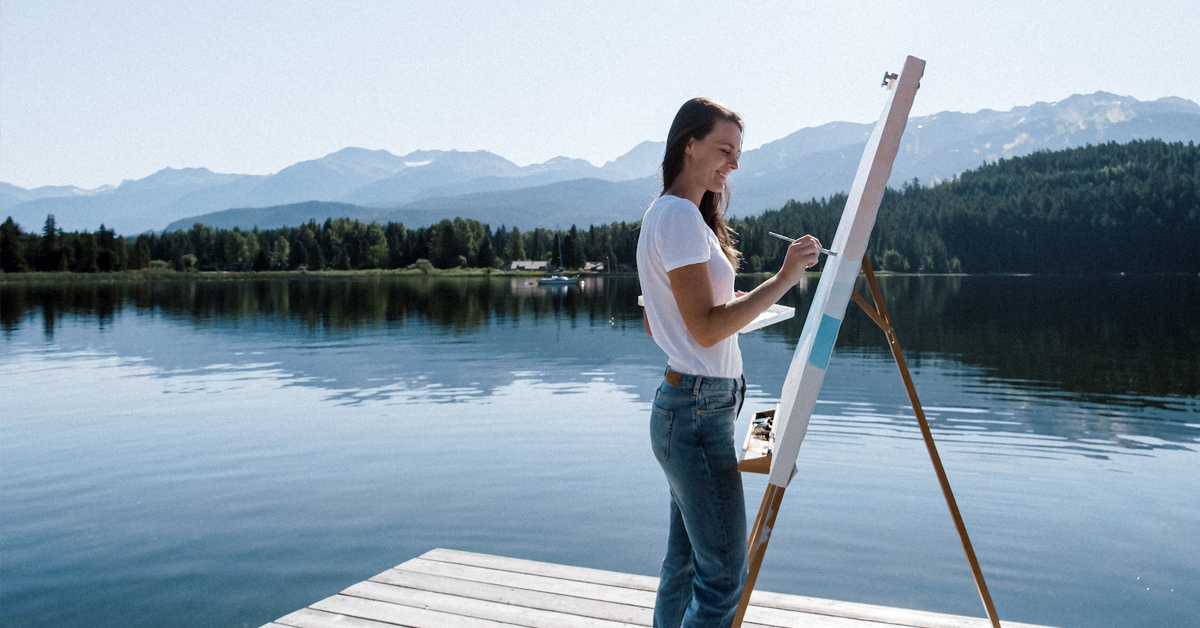


You don’t often see artists or creative practitioners on the BC Business 30 Under 30 list. What do you think your recognition on the list says about your work, in particular, and the industry you represent?
I think they see a lot of success already and potential down the road, which is a beautiful compliment. What I think it says about the industry as a whole is that, to quote Andy Warhol, “being good in business is the most fascinating kind of art.” The business side of arts and culture is an area that’s often overlooked.
What is the inspiration for your work? How long did it take you to find your niche?
The sense of adventure, awe and beauty of nature that surrounds us and the grandeur of the mountains is where my inspiration comes from. The experience of being in the mountains and in nature and being humbled by its magnificence. I want to preserve that moment in time and that emotion in my pieces. Hopefully, it also will encourage the viewer to want to protect nature and our beautiful home.
From your own experience, what have you seen as the value of having an Arts degree?
It’s not just having that piece of paper; it’s the way that you learn to think. You’re able to think critically and reflect on your own experiences and the experiences of others.
I also believe that the degree holds more weight because it’s from UBC. There is a lot of prestige in being an alumni from UBC. I’m grateful for the recognition that comes along with being an alumnus from such an outstanding school, no matter what degree I have.
What advice would you give to students or alumni interested in either making a living as an artist or starting their own business?
Do it! It’s definitely harder than it looks, but it’s also way more fun than you could even imagine. If you have an inkling that you should be doing it, or you could be doing it, you definitely can, and you definitely should.
Meg O’Hara



Meg O’Hara is the founder and CEO of Meg O’Hara Creative and was recently named to the BC Business 30 Under 30 list. She works as a landscape painter in Whistler, BC and has been commissioned to produce paintings for ski resorts, heli-ski lodges and private collections throughout North America. In this interview, she talks about balancing work and play, the inspiration behind her work, and why artists need business skills.
Why did you choose Art History and what did you enjoy most about it?
I come from a big art family—not necessarily artists, but champions for the arts. One of my great uncles is an art collector, and on my visits, he would teach me about the pieces and their respective meaning and history, which sparked a keen interest to unveil the deep-rooted history behind my favourite works of art.
My passion for art led me to take an art history class in my first year, covering the 16th century to the present. It was my favourite class, by far, and my best grade—a natural fit. This led me on my journey through Art History, which I loved and cherished throughout; the rest is history.
What were your most meaningful experiences at UBC?
My most meaningful experience at UBC was being a part of the Ski and Board Club. This is where I met all my friends and fostered lifelong connections. Realistically, skiing was the reason I came to UBC. I thought I can get the best academics, I can go to a top university and be able to ski all the time—a no-brainer. In reflection of my time at UBC, my best and most cherished memories were with the people I met through the Ski & Board Club, and to this day they are some of my closest friends.
I’m also dyslexic. I wrote all of my exams using Access and Diversity [now the Centre for Accessibility]. While this service was not quite the most meaningful experience of my undergrad, it was something that I really appreciated. UBC’s accommodations allowed me to maximize my academics at UBC and reach my full potential; I am incredibly grateful to have had that support.
What choices did you make at UBC that contributed to your career success?
I took fewer courses in the second semester every year to be able to ski often at Whistler Blackcomb; I managed to ski 60–90 days each school year, which is rad. It probably wouldn’t have seemed like the best career choice at the time to be skiing so much, but it worked out in my favour now since about 80% of my clients are linked to the ski industry.
All my ski days also taught me invaluable time management skills. I used to study in the ski lodge, and now I take work meetings on chairlifts. I learned how to prioritize and manage workloads efficiently. Academics was always my top priority, but I made sure to factor skiing and social life into my routine. I carry that same principle today. It’s helped me structure not just my career but the company culture at Meg O’Hara Creative—making sure all employees have a healthy work-life balance and take advantage of the beautiful landscapes that inundate British Columbia.
I’ve learned to be able to be productive in any environment.
When did you realize you wanted to start a career as a painter? And when did you realize you could do it?
I wanted to be an artist since I was a kid, but I was ignorant to the prospect of my painting becoming a viable career option. This misconception led me to a corporate job, and the experience was absolutely miserable. I continued to pursue art on the side, and as time went on, I began to focus more on art and less on my corporate job. The corporate lifestyle is not for me, so I ran the numbers and discovered that I could make it work as an artist. I left my desk job and went for it.
The most overlooked aspect of my career, and many creatives alike, is the crucial business component. While my job title is an artist, I’m also a businesswoman. People don’t understand that if you want to be an artist, you also need entrepreneurial skills and an aptitude for business.



You don’t often see artists or creative practitioners on the BC Business 30 Under 30 list. What do you think your recognition on the list says about your work, in particular, and the industry you represent?
I think they see a lot of success already and potential down the road, which is a beautiful compliment. What I think it says about the industry as a whole is that, to quote Andy Warhol, “being good in business is the most fascinating kind of art.” The business side of arts and culture is an area that’s often overlooked.
What is the inspiration for your work? How long did it take you to find your niche?
The sense of adventure, awe and beauty of nature that surrounds us and the grandeur of the mountains is where my inspiration comes from. The experience of being in the mountains and in nature and being humbled by its magnificence. I want to preserve that moment in time and that emotion in my pieces. Hopefully, it also will encourage the viewer to want to protect nature and our beautiful home.
From your own experience, what have you seen as the value of having an Arts degree?
It’s not just having that piece of paper; it’s the way that you learn to think. You’re able to think critically and reflect on your own experiences and the experiences of others.
I also believe that the degree holds more weight because it’s from UBC. There is a lot of prestige in being an alumni from UBC. I’m grateful for the recognition that comes along with being an alumnus from such an outstanding school, no matter what degree I have.
What advice would you give to students or alumni interested in either making a living as an artist or starting their own business?
Do it! It’s definitely harder than it looks, but it’s also way more fun than you could even imagine. If you have an inkling that you should be doing it, or you could be doing it, you definitely can, and you definitely should.
